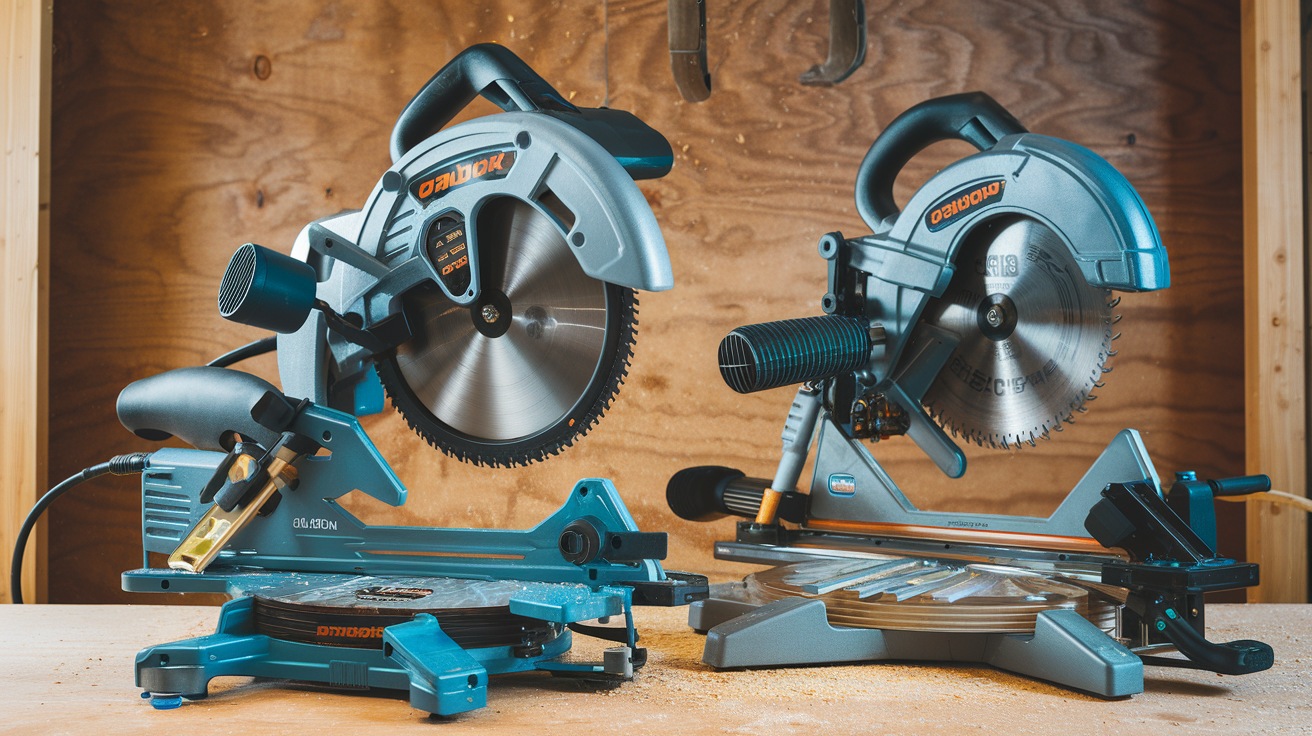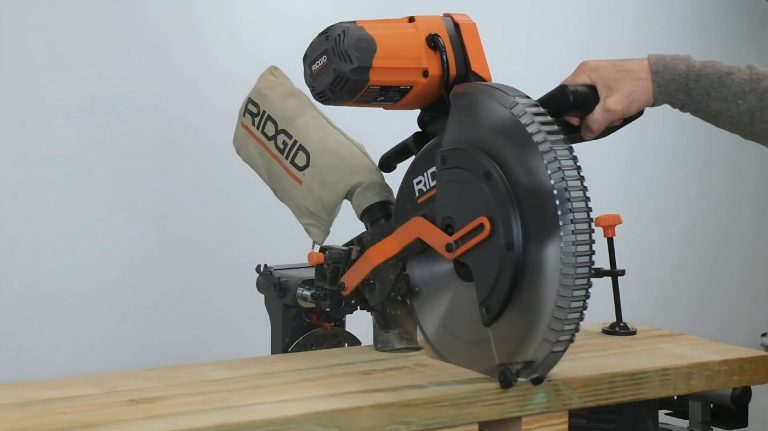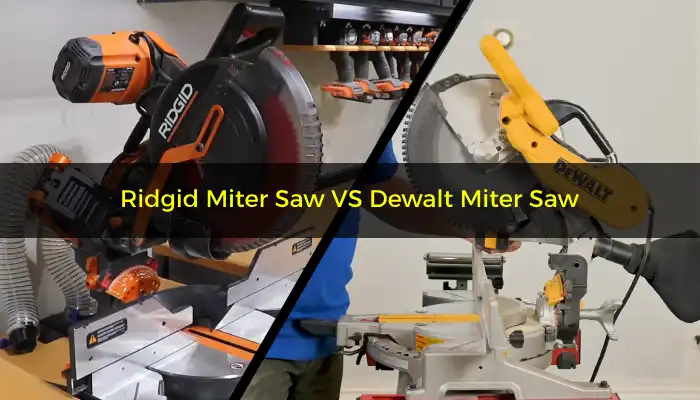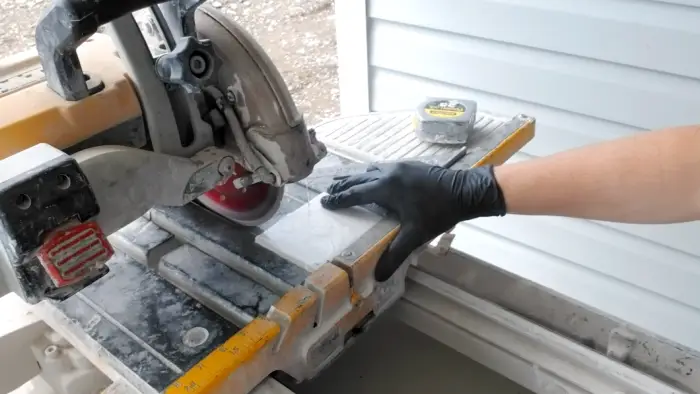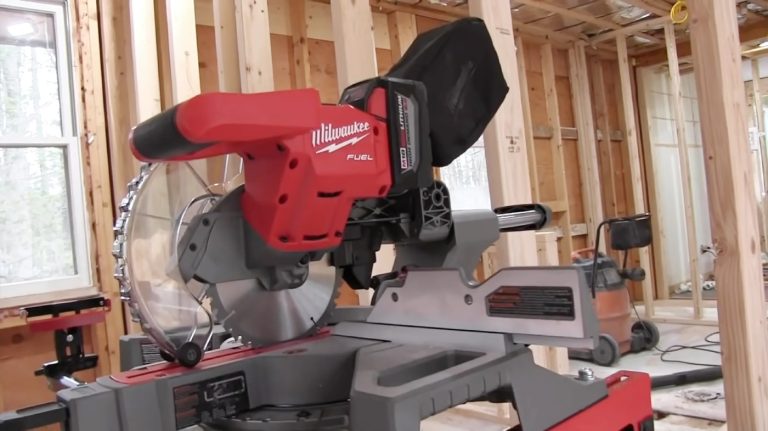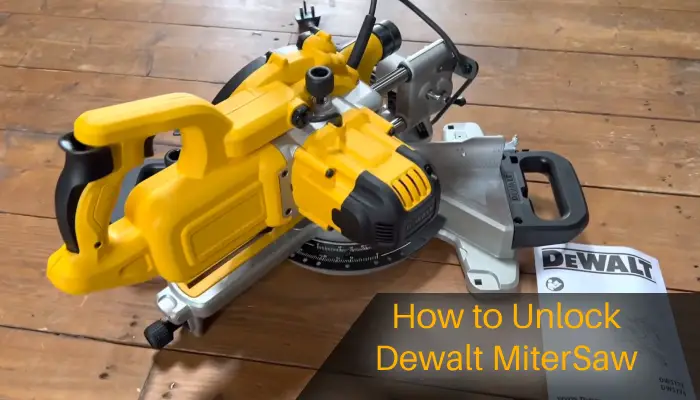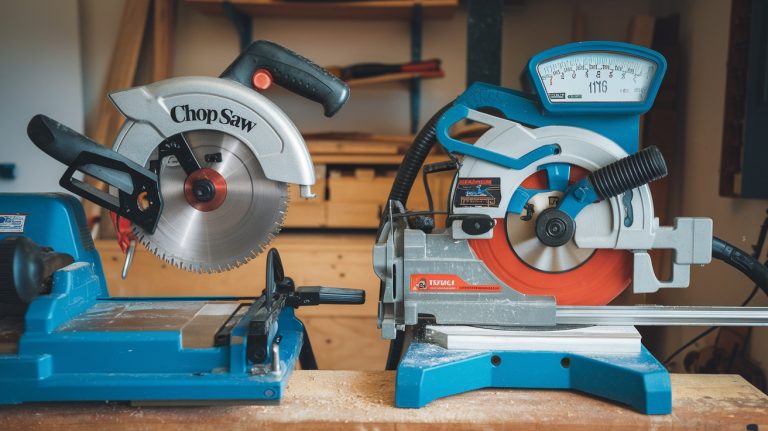Single vs Double Bevel Miter Saw: The Ultimate Comparison
When you compare single and double bevel miter saws, consider their cutting capabilities and functionality.
A single bevel saw tilts in one direction, making it budget-friendly and suitable for basic tasks. It’s portable, but you’ll need to flip your workpieces for opposing angles.
In contrast, a double bevel saw tilts both left and right, reducing setup time and boosting efficiency on complex cuts, like crown molding.
Though pricier, it’s ideal for professional use. Your choice will depend on the complexity of your projects and budget, but there’s much more to explore about these essential tools.
Key Takeaways
- Single bevel miter saws tilt in one direction, while double bevel models tilt both left and right for enhanced cutting efficiency.
- Double bevel saws allow for bevel cuts in both directions without flipping workpieces, streamlining the workflow.
- Single bevel miter saws are generally more affordable, making them suitable for beginners and casual users.
- Double bevel saws offer larger cutting capacities and are more suitable for complex projects like crown molding.
- Users report greater speed and accuracy with double bevel saws, justifying their higher initial investment for serious woodworkers.
Single Bevel Miter Saw Overview
A single bevel miter saw is designed to tilt in one direction, typically to the left, allowing you to make precise angled cuts with ease. This capability enables you to perform bevel cuts effectively, but keep in mind you’ll need to flip your workpiece for opposing angles.
While these saws are generally more budget-friendly, making them an appealing choice for beginner woodworkers and DIY enthusiasts, they come with some limitations.
They excel at crosscuts and miter cuts, making them suitable for a variety of woodworking tasks, but their precision may not match that of more advanced models.
You can execute crosscuts, miter cuts, bevel cuts, and compound cuts with a single bevel miter saw, but their versatility may not match that of double bevel models. However, they remain sufficient for most basic home projects.
Additionally, single bevel miter saws tend to be lighter and more portable. This portability is a significant advantage if you need to transport your tools between job sites.
For casual users or hobbyists, a single bevel miter saw can provide the functionality you require without breaking the bank.
Double Bevel Miter Saw Overview
With the ability to tilt both left and right, a double bevel miter saw greatly enhances your cutting efficiency for complex projects. This versatility is essential when you’re tackling intricate tasks like crown molding, where precision is key.
By allowing bevel cuts in both directions, you can achieve accurate angles without the hassle of flipping the workpiece, saving you valuable time and reducing the risk of measurement errors. Additionally, the differences between miter and chop saws highlight how a double bevel miter saw can be more versatile for various materials and cuts.
Double bevel miter saws typically offer larger cutting capacities and come equipped with advanced features, making them ideal for professional woodworkers and frequent DIY enthusiasts.
Their design caters to projects that require multiple bevel cuts, providing the flexibility needed for varied angles and complex trims.
Although double bevel miter saws tend to be pricier than single bevel models, their enhanced functionality justifies the investment.
The reduction in setup time for angled cuts means you can focus more on your craftsmanship rather than adjusting your tools.
Popular models like the Dewalt DWS780 and Bosch GCM12SD are renowned for their reliability and user-friendly features, ensuring you get the best results in your woodworking projects.
Key Differences Between Single vs Double Bevel Miter Saw
There are some important distinctions between single and double bevel miter saws that can significantly impact your woodworking projects. Below are the key differences that can help you determine which type of miter saw best suits your needs:
Pivot Direction Differences
Pivot direction plays an essential role in the functionality of miter saws, directly affecting how you approach angled cuts. With a single bevel miter saw, you can only pivot to one side, typically left.
This limitation means that for opposing bevel cuts, you’ll need to flip the workpiece, which can introduce errors and consume valuable time.
In contrast, a dual bevel miter saw allows you to tilt in both directions, facilitating angled cuts without needing to reposition the material.
Here’s a quick comparison of pivot direction differences:
| Feature | Single Bevel Miter Saw | Dual Bevel Miter Saw |
|---|---|---|
| Pivot Direction | One Direction (Left) | Two Directions (Left & Right) |
| Bevel Cuts Ease | Requires Flipping | No Flipping Required |
| Efficiency | Lower | Higher |
| Suitable Projects | Basic Cuts | Complex Cuts |
| Time Consumption | More Time Needed | Less Time Needed |
The pivot direction considerably influences the versatility and efficiency of the saw. A dual bevel miter saw is the superior choice for those seeking flexibility in making precise bevel cuts.
Workpiece Handling Comparison
Proper workpiece handling is essential for achieving accurate cuts with miter saws, and the differences between single and double bevel models greatly affect this process.
When using single bevel saws, you’ll need to flip the workpiece to make bevel cuts in the opposite direction. This not only increases the time spent on adjustments but can also compromise accuracy if not done correctly.
In contrast, double bevel miter saws allow you to cut bevels in both directions without repositioning the material, streamlining your workflow and enhancing efficiency.
The design of single bevel saws typically limits you to left-tilting cuts, whereas double bevel saws provide the versatility of both left and right tilting.
For complex projects, such as crown molding, the double bevel miter saw’s capability to handle multiple bevel cuts without flipping the material considerably reduces the risk of errors, improving precision.
While single bevel saws are generally lighter and more portable for smaller jobs, double bevel miter saws offer greater cutting flexibility, enabling you to tackle varied workpieces with minimal setup.
Frequently Asked Questions
What Is the Advantage of a Double Bevel Miter Saw?
“Time is money,” and a double bevel miter saw saves you both.
With its ability to cut bevels in both directions, you won’t need to flip your workpiece for opposing angles, streamlining your workflow.
This feature greatly reduces the risk of measurement errors, enhancing accuracy on complex cuts like crown molding.
The efficiency and precision a double bevel saw provides can elevate your woodworking projects, making it a worthy investment for serious craftsmen.
Do I Need a Double Bevel Mitre Saw?
Whether you need a double bevel miter saw depends on your project requirements.
If you often tackle complex cuts or work with crown molding, it’s a solid investment. The ability to make bevel cuts in both directions without flipping your workpiece saves time and enhances accuracy.
However, if your projects are simpler and don’t demand precision angles, a single bevel saw might suffice.
Is Single or Double Bevel Better?
Imagine you’re crafting a custom frame for a complex artwork. In this case, a double bevel saw would shine, allowing you to make precise cuts in both directions without flipping the frame.
If you’re primarily doing straightforward projects, a single bevel saw might be all you need. It’s lighter and easier to store, making it a practical choice for occasional users.
Ultimately, it depends on your specific needs and project complexity.
Is a Single Bevel Mitre Saw Good?
A single bevel miter saw‘s a solid choice for most DIY projects and home improvements.
You’ll find it’s effective for basic miter and bevel cuts, especially if you’re working on simpler tasks. Its affordability and lighter weight make it easy to transport and store, perfect for small workshops.
However, if you frequently need to switch angles or tackle complex cuts, you might find its limitations a bit challenging for your needs.
Craft Your Vision with Precision: Choose the Right Miter Saw for Your Masterpieces
In choosing between a single or double bevel miter saw, envision your workshop as a canvas. A single bevel saw offers simplicity for straightforward cuts, while a double bevel saw paints with a broader palette, allowing for intricate angles without repositioning your workpiece.
As you weigh your options, consider your specific needs and project demands. Ultimately, the right saw becomes your brush, transforming raw materials into finely crafted masterpieces tailored to your vision.

